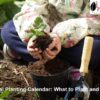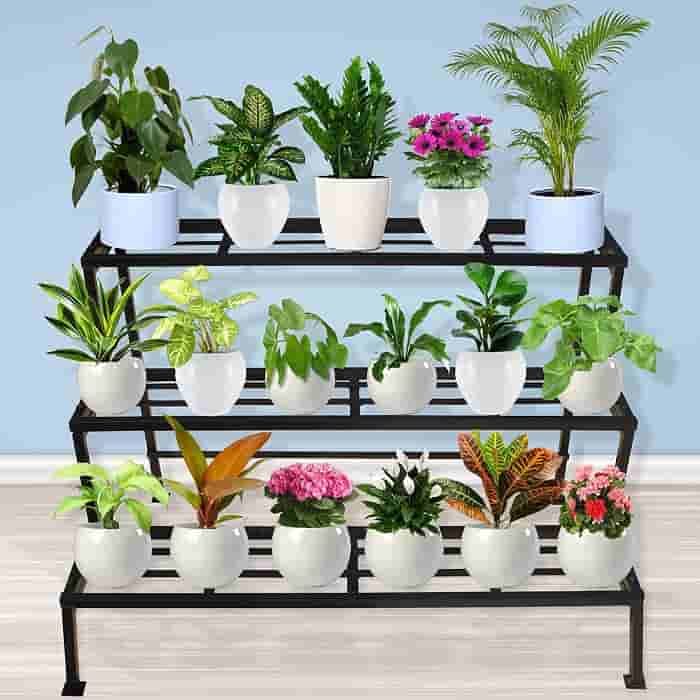Gardening offers a unique blend of fun and education, making it an ideal activity for families. When kids get involved in gardening, they learn about nature, science, and the importance of patience and responsibility. Additionally, it encourages healthy habits and fosters a sense of achievement as children watch their plants grow from seeds to blooms.
Why Gardening with Kids is Beneficial
Gardening with children provides numerous benefits, both physically and mentally. It is a fantastic way to get kids outdoors and active, promoting physical fitness while nurturing a sense of curiosity and wonder about the natural world.
Building Strong Family Bonds
Working together in the garden is a wonderful way to strengthen family bonds. It provides an opportunity for parents and children to spend quality time together, away from screens and daily distractions. As you plant, water, and care for the garden together, you share experiences and create lasting memories.
Encouraging Healthy Eating Habits
Gardening encourages children to develop healthy eating habits by teaching them where their food comes from. When kids grow their own vegetables, they are more likely to try and enjoy them. Harvesting fresh produce from the garden can make meals more exciting and nutritious.
Teaching Responsibility and Patience
Gardening teaches children important life skills such as responsibility and patience. Kids learn that plants need regular care—watering, weeding, and protection from pests. They also learn patience as they wait for their plants to grow and produce flowers or vegetables.
Choosing Kid-Friendly Plants
Selecting the right plants is crucial for keeping kids interested in gardening. Opt for plants that are easy to grow, quick to harvest, and visually appealing.
Easy-to-Grow Vegetables
Vegetables like radishes, carrots, beans, and peas are perfect for children because they are easy to plant, grow quickly, and provide a rewarding harvest. These vegetables are also small enough for little hands to handle, making them ideal for young gardeners.
Colorful Flowers to Spark Interest
Brightly colored flowers such as sunflowers, marigolds, and zinnias can capture a child’s imagination and keep them engaged. Sunflowers are especially fun because they grow tall and have large blooms, making them a favorite among kids.
Herbs for Sensory Fun
Herbs like mint, basil, and rosemary are great choices for sensory engagement. Their strong scents and flavors add a fun element to gardening, and they are easy to grow in small pots or garden beds.
Preparing the Garden Together
Involving children in garden preparation can be a fun and educational experience. It teaches them the basics of gardening and fosters a sense of ownership and pride in their work.
Creating a Child-Safe Garden Space
Ensure the garden area is safe for kids by removing any sharp tools or toxic plants. Consider creating a small, designated garden bed just for them. This gives kids a sense of ownership and responsibility for their own garden space.
Involving Kids in Soil Preparation
Show your kids how to prepare the soil by removing weeds and adding compost. This hands-on activity is not only fun but also educational, as it teaches them about soil health and plant nutrition.
Teaching the Basics of Planting
Teach your children how to plant seeds or seedlings by demonstrating the correct depth and spacing. Encourage them to take turns watering and caring for the plants as they grow.
Hands-On Projects to Inspire Creativity
Adding creative elements to your gardening routine can make the experience more engaging for children.
DIY Miniature Gardens
Help your kids create their own miniature gardens using small containers, soil, and a variety of plants. They can design fairy gardens or dinosaur habitats, adding their own imaginative touches.
Building a Butterfly Garden
Plant flowers that attract butterflies, such as lavender, coneflowers, and milkweed. Encourage your kids to learn about different butterfly species and create a safe habitat for them in your garden.
Painting and Decorating Plant Pots
Let your kids express their creativity by painting and decorating plant pots. They can use bright colors and fun designs to personalize their garden space.
Educational Aspects of Gardening
Gardening offers numerous opportunities for educational lessons in science, biology, and environmental studies.
Understanding the Plant Life Cycle
Teach your kids about the plant life cycle by showing them how seeds germinate and grow into mature plants. Use a journal to track the progress of each plant, noting changes and growth over time.
Learning About Insects and Pollinators
Introduce your kids to the fascinating world of insects and pollinators. Teach them about the important role bees, butterflies, and other insects play in the garden ecosystem.
Exploring Science through Gardening Experiments
Conduct simple gardening experiments, such as testing the effects of sunlight and water on plant growth. This hands-on approach makes learning about science fun and engaging for kids.
Dealing with Short Attention Spans
Keeping kids engaged in gardening can be challenging, especially for younger children with shorter attention spans.
Breaking Tasks into Fun, Short Activities
Break gardening tasks into short, manageable activities that are easy and fun. This can include planting seeds, watering plants, or searching for bugs.
Incorporating Playtime into Gardening
Incorporate play into gardening by creating games, such as a scavenger hunt for different types of plants or insects. This makes the experience more engaging and enjoyable for kids.
Managing Garden Pests and Problems
Gardens can attract pests, but there are safe and effective ways to manage them with kids around.
Safe, Kid-Friendly Pest Control
Use natural pest control methods, such as introducing beneficial insects like ladybugs or using homemade sprays made from soap and water. Avoid using harsh chemicals that could be harmful to children.
Teaching Kids About Good and Bad Bugs
Teach your kids to recognize helpful and harmful insects in the garden. This knowledge can help them understand the importance of a balanced ecosystem and the role insects play.
Harvesting Together: A Rewarding Experience
Harvesting is a great way to show kids the results of their hard work and dedication.
Planning a Garden-to-Table Meal
Plan a special meal using the fruits and vegetables harvested from your garden. Involve your kids in meal preparation to reinforce the connection between gardening and healthy eating.
Sharing the Harvest with Friends and Family
Encourage your children to share their garden produce with friends and family. This fosters a sense of generosity and pride in their achievements.
Documenting Your Gardening Journey
Recording your gardening experiences can be a fun way to track progress and celebrate milestones.
Creating a Gardening Scrapbook
Create a scrapbook to document your gardening journey. Include photos, drawings, and notes about what you have planted and the lessons learned along the way.
Using Photography to Capture Memories
Take photographs of your garden throughout the growing season. Use these photos to create a digital album or print them to display around your home.
Conclusion
Gardening with kids is more than just a fun outdoor activity; it’s an educational experience that fosters a love for nature, teaches responsibility, and promotes healthy habits. By involving your children in gardening, you are helping them develop valuable life skills while creating cherished family memories. So, grab your gardening gloves and start growing together!










Recent Comments